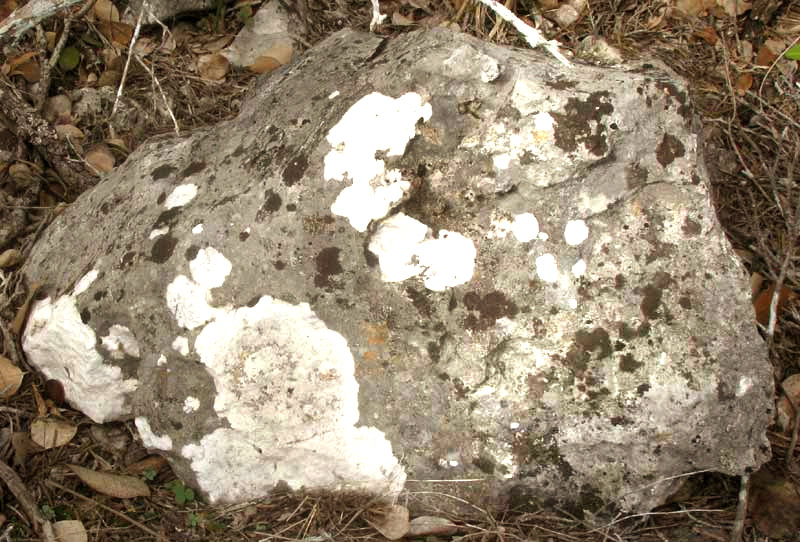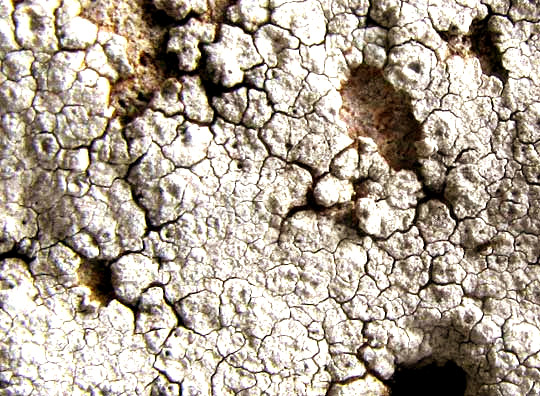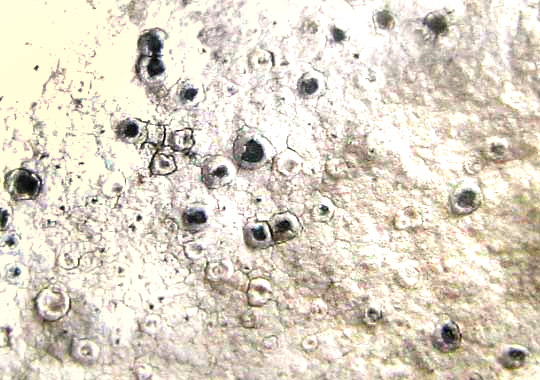
Often crustose lichens look like what's shown at the right: fairly smooth "crusts" covering rocks, smooth tree twigs and such. In the picture, the whitish splotches are formed by the Calcareous Rimmed Lichen, Circinaria calcarea. When the word "calcareous" is applied to an organism in an ecological context, it means "occurring in environments with high levels of the mineral calcium carbonate," such as on limestone and chalk. The rock in the picture is limestone.

A close-up of one of the splotches is shown at the left. You can see that it's little more than a thin, crusty layer of tissue. One guesses that when the crust is drying, the cells shrink, causing cracks. Crustose lichens on rocks produce weak acids which dissolve the rock, releasing nutrients the lichen needs. On limestone, lichen root-like filaments (the fungal hyphae) have been detected 13mm (half an inch) beneath the rock's surface. Over years, even centuries, this causes the rock surface to become irregular, and organic matter accumulates, enabling other organisms to "take root" and grow on the rock. Thus crustose lichens often are pioneer organisms on bare rock, making life easier and more diverse for those who come after them.

Even with such a simple appearance, crustose lichens reproduce. At the right, the black-centered craters are apothecia in which fungal spores are produced. Spores are transported by wind or water, and if they end up in the right environment, and if the right algal cells are nearby, a new lichen will form.